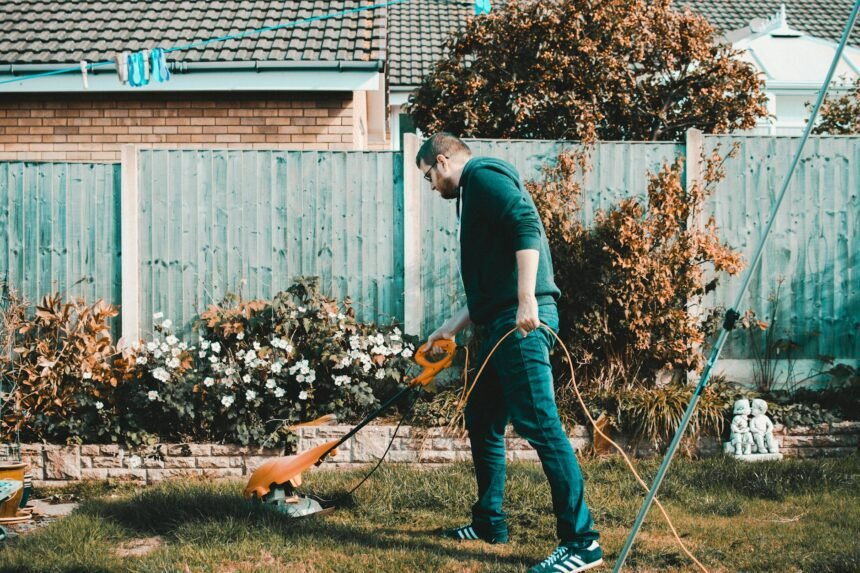Cast iron plant, or Aspidistra elatior, is pretty much your best bet if you want a hard-to-kill plant. Also known as bar room plants, these hardy, blooming plants are native to Taiwan and Japan. Cast iron plants are so named because they can thrive in a variety of environments, including ones with little light and water.
“These plants can withstand a wide range of neglect, from low humidity and temperature fluctuations to poor light and infrequent watering,” explains Bigger Garden owner and seasoned gardener Brock Ingham. “Cast iron plants might be the best type for you if you’ve ever returned from a quick trip to find your houseplants wilted and looking depressed.”
Regardless of your skill level, we still suggest adding this plant baby to your collection because of its vibrant green foliage. How to take care of a cast iron plant to ensure its success
Features
These hardy evergreens reach heights of two to three feet and widths of one to two feet. Long, rigid, pointed green leaves are characteristic of cast iron plants; some even have light-colored stripes or speckles of yellow and white.
Growing Conditions
Light
In low-light indoor or outdoor settings, indirect light is ideal for cast iron plants. Direct sunlight can cause damage to them by scorching their leaves. Make sure your outdoor cast iron plants are shaded and out of direct sunshine if you have any.
According to Ingham, cast iron plants are a great option for interior spaces that might not get a lot of natural light because they prefer low to moderate indirect light. “Although they do well in low light, it is important to protect them from direct sunlight as prolonged exposure can cause damage to their leaves.”
Water
Cast iron plants should be allowed to dry out in between waterings to maintain their vitality. Don’t let their pots remain in overflowing water trays. The primary risk for these generally hardy plants is root rot, which can be brought on by overwatering.
“These hardy plants can go without water for extended periods of time, making them ideal for new or distracted gardeners,” says Anna Ohler, proprietor of Bright Lane Gardens Nursery.
Humidity and Temperature
According to Ohler, the ideal temperature range for cast iron plants is between 50 and 80 degrees Fahrenheit. Though hardy plants, they shouldn’t be kept below 50 degrees because low temperatures can harm or even kill them.
Average humidity is ideal for cast iron plants. Hardy evergreens thrive in most humidity conditions, while a humidifier may be useful if your home is extremely dry.
Soil
For cast iron plants, standard potting soil or mixes made for succulents or cacti can be used effectively. With a pH range of slightly acidic to neutral, cast iron plants thrive. Because of their flexibility, they can thrive in soil that has a pH of 5.5 to 7.5.
Standard houseplant mixes are fine, but mixes made specifically for cacti or succulents will provide the additional drainage required for their success, according to Ingham. “To prevent the roots from sitting in water, the goal is to create a soil environment that supports moisture retention without retaining excess water.”
Apply fertilizer
During the spring and summer, treat your indoor cast iron plants once a month using liquid fertilizer. Fertilize them no longer during the fall and winter. Apply an all-purpose fertilizer to outdoor cast iron plants in the spring or summer once a year.
Typical Insect Pests and Illnesses
Although they are not impeneInsectse, cast iron plants are resistant to many common pests and issues, especially when grown outdoors in their natural habitat. Check out the common problems individuals have with cast iron plants below.
Rotten Roots
One of the most frequent problems with cast iron plants is root rot. Planting your cast iron plants in well-draining soil and not overwatering them will help prevent root rot.
According to Ingham, the main disease risk for cast iron plants is root rot, which is typically caused by overwatering. This disease may cause the roots to rot, which would eventually damage the entire plant. In the event of root rot, the plant might need to be repotted in new soil after any decomposing roots are removed.
Brown Sheaths
Brown leaf tips on cast iron plants might result from overfertilization, over watering, or low humidity. If your tap water is harsh, Ingham suggests using rainwater or filtered water, and letting the soil around your plants dry out in between waterings. A humidifier can help you add humidity to your home if the air is dry.
Blanched Foliage
Direct sun exposure is another problem that cast iron plants have to deal with. Your cast iron plant can be receiving too much sunshine if its leaves appear bleached. To guarantee healthy leaves, keep your cast iron plants out of direct sunlight.
Pests
Indoor cast iron plants can occasionally become infected with pests including mealy bugs, spider mites, and scale. If any of these pests decide to attack your plants, give them a warm water spray to drive them away. Use a horticultural oil or insecticidal soap to get rid of any infestations you may have.
What are the features of a cast iron plant?
Cast iron plants are hardy evergreens with long, rigid, pointed green leaves. Some even have light-colored stripes or speckles of yellow and white. They reach heights of two to three feet and widths of one to two feet.
What are the ideal growing conditions for a cast iron plant?
Cast iron plants prefer low to moderate indirect light, and should be allowed to dry out in between waterings. They thrive in average humidity and temperatures between 50 and 80 degrees Fahrenheit.
What type of soil is best for a cast iron plant?
Standard potting soil or mixes made for succulents or cacti can be used effectively. They thrive in slightly acidic to neutral pH levels (5.5 to 7.5).
How often should I fertilize a cast iron plant?
Indoor cast iron plants should be treated once a month with liquid fertilizer during the spring and summer. Outdoor plants should be fertilized once a year with an all-purpose fertilizer.
What are common pests and diseases of cast iron plants?
Cast iron plants can occasionally become infected with pests like mealy bugs, spider mites, and scale. The most frequent disease is root rot, typically caused by overwatering.









